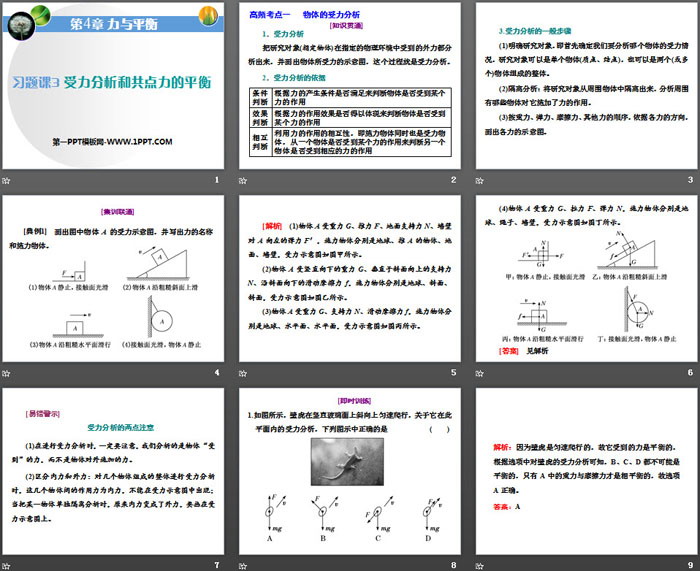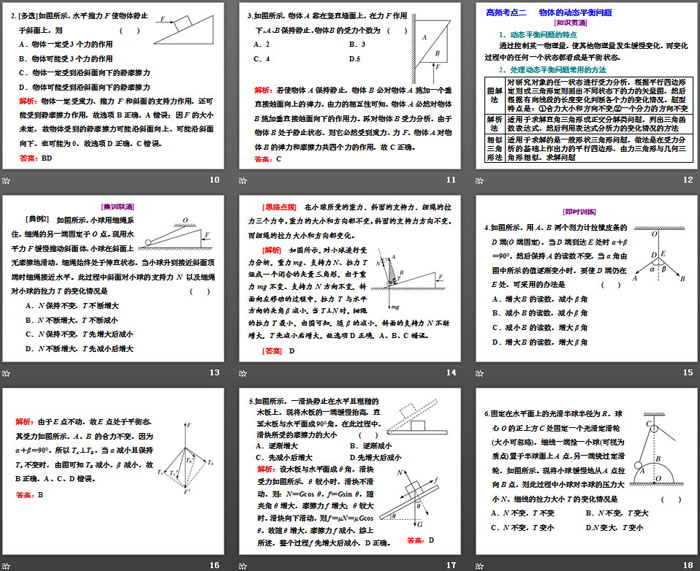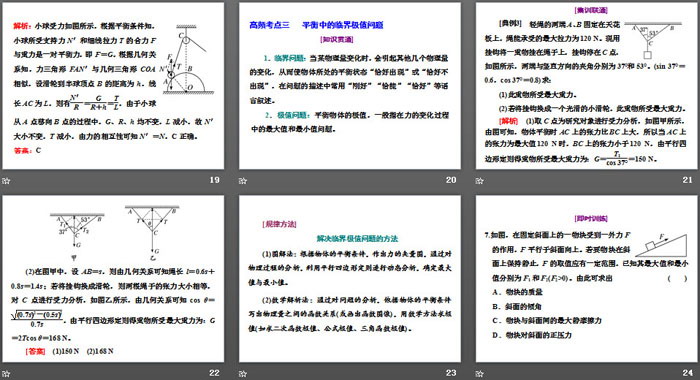People's Education Edition Physics for Grade 8, Volume 2
People's Education Edition Ninth Grade Physics Complete Book
Shanghai Science Edition Ninth Grade Physics
People's Education Edition Physics for Grade 8, Volume 1
Shanghai Science Edition 8th Grade Physics
Beijing Normal University eighth grade physics volume one
Lu Jiao Edition Ninth Grade Physics Volume 1
Beijing Normal University Ninth Grade Physics Volume 1
Lu Jiao Edition Ninth Grade Physics Volume 2
Lu Ke Edition High School Physics Compulsory Course One
Guangdong and Shanghai Edition Ninth Grade Physics Volume 1
People's Education Press High School Physics Compulsory Course II
Guangdong and Shanghai version of eighth grade physics volume 2
Beijing Normal University Ninth Grade Physics Volume 2
Lu Jiao Edition Eighth Grade Physics Volume 2
Guangdong and Shanghai Edition Ninth Grade Physics Volume 2

| Category | Format | Size |
|---|---|---|
| Lu Ke Edition High School Physics Compulsory Course One | pptx | 6 MB |
Description
"Force Analysis and Balance of Common Point Forces" Force and Balance PPT
Part One: High Frequency Test Point 1: Force Analysis of Objects
[Knowledge Comprehensive]
1. Force analysis
Analyze all the external forces that the research object (specified object) receives in the specified physical environment, and draw a schematic diagram of the forces on the object. This process is force analysis.
2. Basis for force analysis
Conditional judgment: Determine whether an object is acted upon by a certain force based on whether the conditions for force generation are met.
Effect judgment: Judge whether an object is acted upon by a certain force based on whether the effect of the force is reflected.
Mutual judgment uses the reciprocity of force, that is, the object exerting force is also the object receiving force. Whether one object is acted upon by a certain force can be used to judge whether another object is acted upon by the corresponding force.
3. General steps of force analysis
(1) Clarify the research object, that is, first determine which object's force condition we want to analyze. The research object can be a single object (particle, node), or a whole composed of two (or more) objects.
(2) Isolation analysis: Isolate the research object from the surrounding objects and analyze which surrounding objects exert a force on it.
(3) Draw a schematic diagram of each force according to the order of gravity, elastic force, friction force and other forces and according to the direction of each force.
[Training Unicom]
[Typical Example 1] Draw a schematic diagram of the force on object A in the picture, and write down the name of the force and the object exerting the force.
[ Analysis The force diagram of the wall is shown in Figure A.
(2) Object A is subject to the vertical downward gravity G, the upward support force N perpendicular to the inclined surface, and the sliding friction force f downward along the inclined surface. The force-applying objects are the earth, the inclined surface, and the inclined surface respectively. The force diagram is shown in Figure B shown.
(3) Object A is subject to gravity G, support force N, and sliding friction force f. The force-applying objects are the earth, the horizontal plane, and the horizontal plane respectively. The force diagram is shown in Figure C.
(4) Object A is subject to gravity G, tension F, and elastic force N. The force-exerting objects are the earth, the rope, and the wall respectively. The force diagram is shown in Figure D.
[Error-prone warning]
Two points to note in force analysis
(1) When performing force analysis, we must pay attention to the fact that what we analyze is the force "received" by the object, not the force exerted by the object.
(2) Distinguish between internal forces and external forces: When performing force analysis on a whole composed of several objects, the forces acting between these objects are internal forces and cannot appear in the force diagram; when an object is analyzed in isolation, It turns out that the internal force becomes an external force, which needs to be drawn on the force diagram.
Force analysis and balance of common point forces PPT, Part 2 content: High-frequency test point 2 Dynamic balance problem of objects
[Knowledge Comprehensive]
1. Characteristics of dynamic balance problems
By controlling a certain physical quantity, other physical quantities are slowly changed, and any state during the change process is regarded as a balanced state.
2. Commonly used methods to deal with dynamic balance problems
Graphical method
Conduct force analysis on any state of the research object, draw vector diagrams of forces in different states according to the parallelogram rule or the triangle rule, and then judge the changes in each force based on the changes in the length of the directed line segments. The characteristics of the question type are: ①The magnitude and direction of the resultant force remain unchanged, ②The direction of one component force remains unchanged
analytical method
This method is suitable for solving right triangle or orthogonal decomposition problems, listing trigonometric function expressions, and then using the expressions to analyze changes in forces.
similar triangle method
It is suitable for solving the general shape triangle problem. The method is to make a parallelogram of force based on the force analysis. Since the force triangle is similar to the geometric triangle, the problem can be solved
[Training Unicom]
[Typical Example 2] As shown in the figure, the ball is tied with a string, and the other end of the string is fixed at point O. Now use horizontal force F to slowly push the inclined plane. The ball slides on the inclined plane without friction. The string is always in a straight state. When the ball rises close to the top of the inclined plane, the string is close to horizontal. During this process, the changes in the supporting force N of the slope on the ball and the pulling force T of the string on the ball are ()
A. N remains unchanged and T continues to increase
B. N continues to increase and T continues to decrease
C. N remains unchanged, T first increases and then decreases
D. N continues to increase, T first decreases and then increases.
[Thinking Points] Among the three forces of gravity, the support force of the inclined plane, and the pulling force of the string, the magnitude and direction of the gravity remain unchanged, and the direction of the supporting force of the inclined plane remains unchanged. The pull force on the string changes both in magnitude and direction.
[ Analysis , during the process of the inclined plane moving to the left, the angle β between the pulling force T and the horizontal direction decreases. When T⊥N, the pulling force T of the string is the smallest. It can be seen from the figure that as β decreases, the supporting force N of the inclined plane continues increases, T first decreases and then increases, so option D is correct, and A, B, and C are incorrect.
Force analysis and balance of common point forces PPT, Part 3: High-frequency test point 3 Critical extreme value problem in equilibrium
[Knowledge Comprehensive]
1. Critical problem: When a certain physical quantity changes, it will cause changes in several other physical quantities, so that the equilibrium state of the object "just happens" or "just doesn't happen". "Just right" and "just enough" are often used in the description of the problem. "Just right" and other language descriptions.
2. Extreme value problem: The extreme value of a balanced object generally refers to the maximum and minimum value problems during the change of force.
[Training Unicom]
[Typical Example 3] The two ends A and B of the light rope are fixed on the ceiling. The maximum tension that the rope can withstand is 120 N. Now use a hook to hang a heavy object on the rope. The hook stops at point C. As shown in the figure, the angles between the two ends and the vertical direction are 37° and 53° respectively. (sin 37°=0.6, cos 37°=0.8) Find:
(1)The maximum gravity experienced by this heavy object.
(2) If the hook is replaced by a smooth small pulley, the maximum gravity will be exerted on the heavy object.
[Regular method]
Methods to solve critical extreme value problems
(1) Graphical method: According to the equilibrium conditions of the object, make a vector diagram of the force. Through the analysis of the physical process, use the parallelogram rule to conduct dynamic analysis to determine the maximum and minimum values.
(2) Mathematical analysis method: Through the analysis of the problem, write the functional relationship between physical quantities (or draw the function image) according to the equilibrium conditions of the object, and use mathematical methods to find the extreme value (such as finding the extreme value of the quadratic function, formula extremum, trigonometric function extremum).
[Instant training]
7. As shown in the figure, a block on a fixed slope is acted upon by an external force F, which is parallel to the slope and upward. If the block is to remain stationary on the slope, the value of F should be within a certain range. It is known that its maximum and minimum values are F1 and F2 (F2>0) respectively. From this we can find ()
A. Mass of the block
B. inclination angle
C. The maximum static friction force between the block and the inclined plane
D. The normal pressure of the block on the inclined plane
Keywords: Free download of PPT courseware for compulsory course 1 of high school physics in Lu Ke Edition, PPT download of force analysis and balance of common point forces, PPT download of force and balance, .PPT format;
For more information about the PPT courseware "Force and Equilibrium Force Analysis and the Balance of Common Point Forces", please click on the Force and Equilibrium PPT Force Analysis and the Balance of Common Point Forces PPT tags.
"Force Analysis and Balance of Common Point Forces" Interaction - Force PPT:
"Force Analysis and Balance of Common Point Forces" Interaction Force PPT Part One Content: High-frequency Test Point 1 Force Analysis of Objects [Knowledge Comprehensive] 1. Force analysis: According to the research problem, select the appropriate object as the research object and analyze what forces the research object is subjected to.
File Info
Update Time: 2024-09-09
This template belongs to Physics courseware Lu Ke Edition High School Physics Compulsory Course One industry PPT template
"Force Analysis and Balance of Common Point Forces" Force and Balance PPT Simple campus recruitment activity planning plan summary enterprise and institution recruitment publicity lecture PPT template is a general PPT template for business post competition provided by the manuscript PPT, simple campus recruitment activity planning plan summary enterprise and institution recruitment promotion Lecture PPT template, you can edit and modify the text and pictures in the source file by downloading the source file. If you want more exquisite business PPT templates, you can come to grid resource. Doug resource PPT, massive PPT template slide material download, we only make high-quality PPT templates!
Tips: If you open the template and feel that it is not suitable for all your needs, you can search for related content "Force Analysis and Balance of Common Point Forces" Force and Balance PPT is enough.
How to use the Windows system template
Directly decompress the file and use it with office or wps
How to use the Mac system template
Directly decompress the file and use it Office or wps can be used
Related reading
For more detailed PPT-related tutorials and font tutorials, you can view: Click to see
How to create a high-quality technological sense PPT? 4 ways to share the bottom of the box
Notice
Do not download in WeChat, Zhihu, QQ, built-in browsers, please use mobile browsers to download! If you are a mobile phone user, please download it on your computer!
1. The manuscript PPT is only for study and reference, please delete it 24 hours after downloading.
2. If the resource involves your legitimate rights and interests, delete it immediately.
3. Contact information: service@daogebangong.com
"Force Analysis and Balance of Common Point Forces" Force and Balance PPT, due to usage restrictions, it is only for personal study and reference use. For commercial use, please go to the relevant official website for authorization.
(Personal non-commercial use refers to the use of this font to complete the display of personal works, including but not limited to the design of personal papers, resumes, etc.)
Preview














